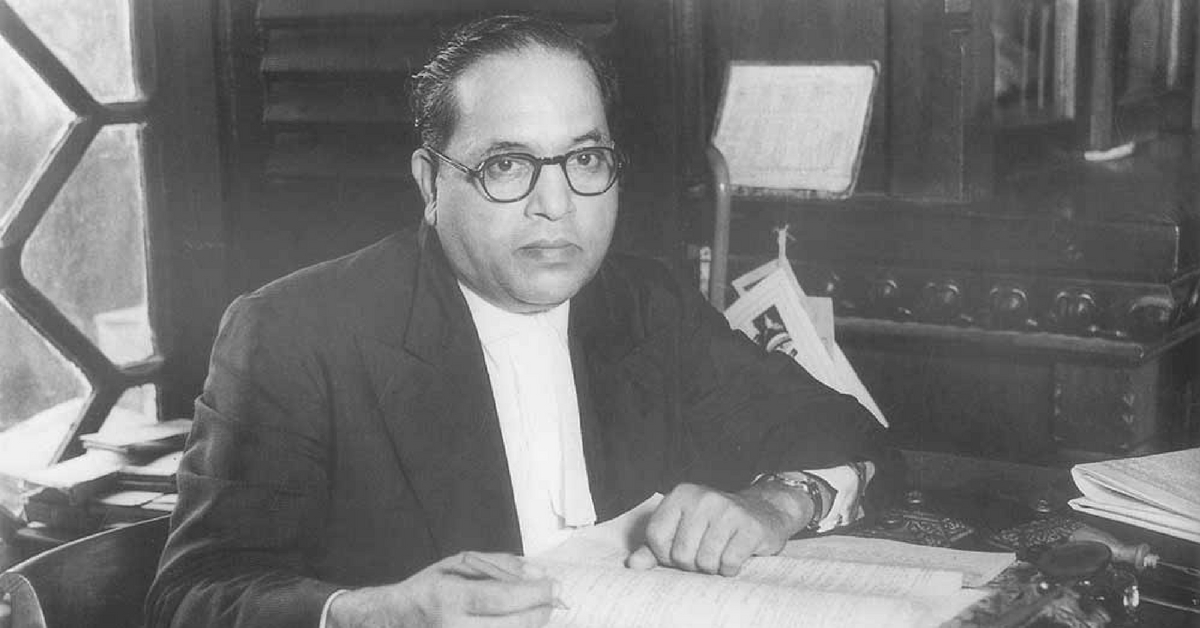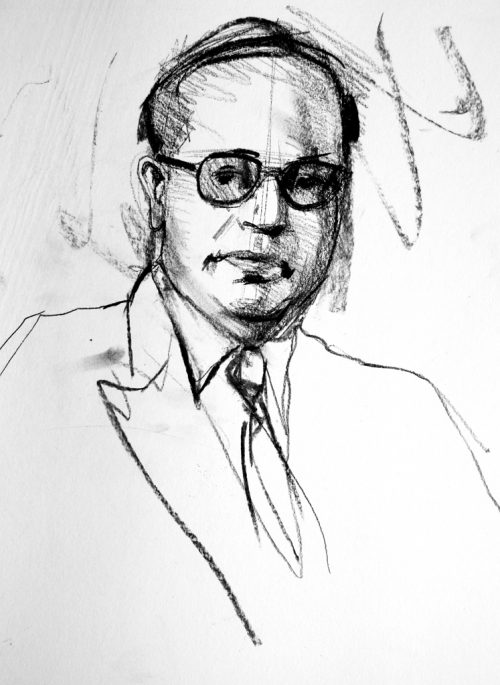TBI Blogs: “We Are Going to Enter Into a Life of Contradictions,” Said Dr. Ambedkar. How Right Was He!
Dr. Bhimrao Ramji Ambedkar, or Baba Saheb, as he is fondly known, is one of the most widely respected figures for his role in campaigning against discrimination, and for being the principal architect of the Indian Constitution. Unfortunately, his legacy continues to suffer, mired in the middle of India’s ongoing debate about caste and reservations.

Dr. Bhimrao Ramji Ambedkar, or Baba Saheb, as he is fondly known, is one of the most widely respected figures for his role in campaigning against discrimination, and for being the principal architect of the Indian Constitution. Unfortunately, his legacy continues to suffer, mired in the middle of India’s ongoing debate about caste and reservations.
All modern Constitutions enact a structural separation of government powers and establish individual rights. In India, the former, pressured by executive and judicial imperatives, has often proved fragile. In contrast, among the more robust and transformative elements of the Indian Constitution are those Articles that grant fundamental rights to citizens defined primarily as members of communities rather than as individuals. This range of community rights remains, in its scope, quite unique to India.
Rights against discrimination (including, quite specifically, caste discrimination) give the state positive powers to eliminate it. A right to equality of opportunity in public employment has also been affirmed. Ambedkar did more than anyone to embed these principles in the Constitution. But out of them grew politics of reservations, or affirmative action, that was paradoxical in its effects.
Initially, the principles were supposed to sanction, for a finite period, the reservation of places, in government employment and educational institutions, for Dalits, tribal groups, and others defined as “economically backward”. (A 10-year jump-start was the initial hope.) But the power to determine eligibility for reservations was given to India’s state legislatures, and a constitutional principle thereby became an electoral expedient.
Politicians can promise, in the name of equality, to expand the number of reserved places, and to extend them to include newly defined “backward classes”. Caste groups, even successful ones, compete, and sometimes campaign violently, to be deemed as backward in order to benefit from reservations, which today apply to just under half of all positions in India’s national government institutions. In one state, the figure approaches 70 %. Down is the new up, in terms of social mobility.
It’s one of the profound ironies of India’s democracy—reservations, designed to erode caste identities and fortify individual citizens, have invigorated caste categories now defined by the state.

As a result of his role in creating these rights, all of India’s political parties, including those whose views he opposed, claim Ambedkar today. He’s become a necessary electoral magnet for any politician who wants the votes of the dispossessed. Prime Minister Narendra Modi, the low-caste leader of the Hindu-nationalist Bharatiya Janata Party (BJP), recently celebrated Ambedkar’s 125th anniversary by applying a tika on the forehead of a statue of the man who spent his entire life fighting Hinduism.
How did such a latecomer to nationalism, and opponent of Gandhi, come to have so central a role in modern India? Nehru never fully trusted Ambedkar, and the feeling was mutual. But Ambedkar, vexing as he was to some, had intellectual skills Nehru and the senior Congress leadership required in the blood-dark wake of Partition. Ambedkar wasn’t only a Dalit representing a vulnerable community. He showed himself able to think across a range of issues, and to ask about the consequences, intended and otherwise, that various laws might have for the society as a whole. After the disaster of Partition – a disaster of political judgement as well as policy – avoiding further short-sighted decisions on minorities could not have mattered more.
Hence, in 1947, after plans for Partition nullified Ambedkar’s seat in the Constituent Assembly (he was elected from, of all places, eastern Bengal), Nehru and Rajendra Prasad, the leader of the Assembly and later India’s first President, scrambled to keep him involved. “Apart from any other consideration, we have found Dr. Ambedkar’s work, both in the Constituent Assembly and the various committees to which he was appointed, to be of such an order as to require that we should not be deprived of his services,” wrote a worried Prasad as he manoeuvred to rig up another electoral post for Ambedkar.
By August, Ambedkar had been given the Drafting Committee chairmanship.
![Source: See page for author [Public domain or Public domain], via Wikimedia Commons](https://en-media.thebetterindia.com/uploads/2017/02/Dr._Bhim_Rao_Ambedkar-500x651.jpg)
Like the reunion achieved by the American Civil War, the Constitution Ambedkar helped to draft marked not the end of a story, but the beginning of a history, involving the pursuit of a still out-of-reach democratic equality. In May 2015, a young man visiting a small town in Maharashtra was beaten to death on receiving a call on his mobile. Other villagers set upon him when they heard his ringtone—a song praising Ambedkar. Thousands of stories of such violence fill the decades between 1950 and the present.
It’s worth taking the comparison with America a bit further. In the United States, slavery was a 300-year-old institution. After abolition, it took another century of struggle for equality to secure full civil rights for black Americans. A half-century later, the struggle is hardly over. In India, caste has, over several millennia, woven itself into the fabric of society, infusing itself as a climate of mind.
Was it ever conceivable that one remarkable individual, a bracing, brave Constitution, and a few dozen free elections would blow it away?
![Source: See page for author [Public domain], via Wikimedia Commons](https://en-media.thebetterindia.com/uploads/2017/02/B.R._Ambedkar_in_1950-500x334.jpg)
He said in parting, “To leave inequality between class and class, between sex and sex, which is the soul of society, untouched, and to go on passing legislation relating to economic problems, is to make a farce of our Constitution, and to build a palace on a dung heap.”
In his final year, he created another political party – the Republican Party – and converted to Buddhism with his followers, in a last effort to conceive of individuals apart from caste. But it wouldn’t have escaped his sense of irony that reservations, and the politics around it, have entrenched the very thing that he wanted to annihilate. “We are going to enter into a life of contradictions,” Ambedkar famously said, closing the debates of the Constituent Assembly in December 1949. “How can people divided into several thousands of castes be a nation?” Alone of all India’s Founders, he recognized the importance of fraternity – the ability to treat each other with dignity – as fundamental to the creation of a political community. Without fraternity, Ambedkar reminded his fellow Indians, “equality and liberty will be no deeper than coats of paint.”
(Excerpted from Incarnations: A History Of India in 50 Lives by Sunil Khilnani. Buy your copy here.)

Organisations like the Dalit Foundation continue to work towards removing caste barriers, and establishing a truly equal and fair society for all. Embodying the principles Dr. Ambedkar strove to enshrine through the Articles of the Constitution, these organisations continue his dream of a society with fraternity—a society and nation that treats all citizens with dignity.
Find out how you can inspire social change by supporting the Dalit Foundation here.
Like this story? Or have something to share? Write to us: [email protected], or connect with us on Facebook and Twitter.
NEW: Click here to get positive news on WhatsApp!
If you found our stories insightful, informative, or even just enjoyable, we invite you to consider making a voluntary payment to support the work we do at The Better India. Your contribution helps us continue producing quality content that educates, inspires, and drives positive change.
Choose one of the payment options below for your contribution-
By paying for the stories you value, you directly contribute to sustaining our efforts focused on making a difference in the world. Together, let’s ensure that impactful stories continue to be told and shared, enriching lives and communities alike.
Thank you for your support. Here are some frequently asked questions you might find helpful to know why you are contributing?


This story made me
-
97
-
121
-
89
-
167













